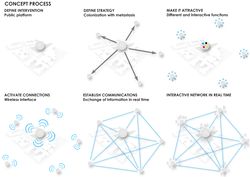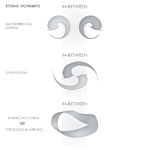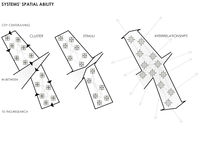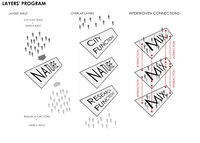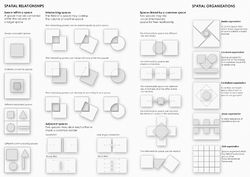atom06:Concept
Contents |
Intervention
Our idea is to create a network that connects in real-time our site with the rest of Delft. From the center of this network, like in metastasis, things spread from the center to non-adjacent parts; contaminating all the city. Metastasis means "displacement" in Greek, from μετά, meta, "next", and στάσις, stasis, "placement".
In practise, our project is divided in two main parts. The center, that is a main public platform that attracts people from different user groups to our site (which is the center between the TU and the city center) where they can interact and communicate; and the metastasis, that are urban located interactive stations that relate back to the center and reverse.
Work in Progress
To define the strategy we are doing analysis on different topics: map the activities of users to understand what can stimulate interaction and communication; investigate the possible system's spatial ability; analyze the flow of people to determine the attractors place in which to place the metastases.
Analyze spatial ability
The diagrams relate to relationships and organizations of space according to F.D.K. Ching
Before actually deciding on who is going where with what purpose, these diagrams show the possibilities of any interaction. With this information we can look at the needs and demands of the various actors in our area. From this we can extrapolate a fitting brief, which we can mold within the possibilities of interaction via the relationships and organizations of the space. The (Inter)action of systems will be the key of our project.
The concept of these diagrams is to form an idea of organizing our users and their uses
Spatial relationships
- space within a space
- interlocking spaces
- adjacent spaces
- space linked by a common space
Spatial organizations
- radial organizations
- clustered organizations
- centered organizations
- linear organizations
- grid organizations
Map users activities
- Map the users
- Map their current & possible activities
- Identify
- How to connect users
- Find matching activities
- Match the users by their activities / mix functions
- Connecting activities form the interaction and program
- The program (list of activities) is organised / mapped
Questions
- How does it change by the effect of users?
- How to map the users? Diagrammatically, with sensors etc.
Possible usergroups
- Students
- Residents
- Science center (workers, visitors, ...)
- Architecture department (tutors, personnel)
- Botanical garden
- Duwo
user groups and their activities and needs - table
